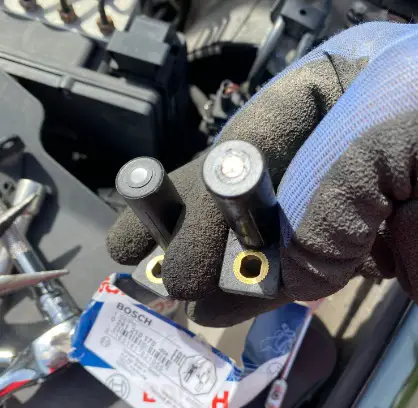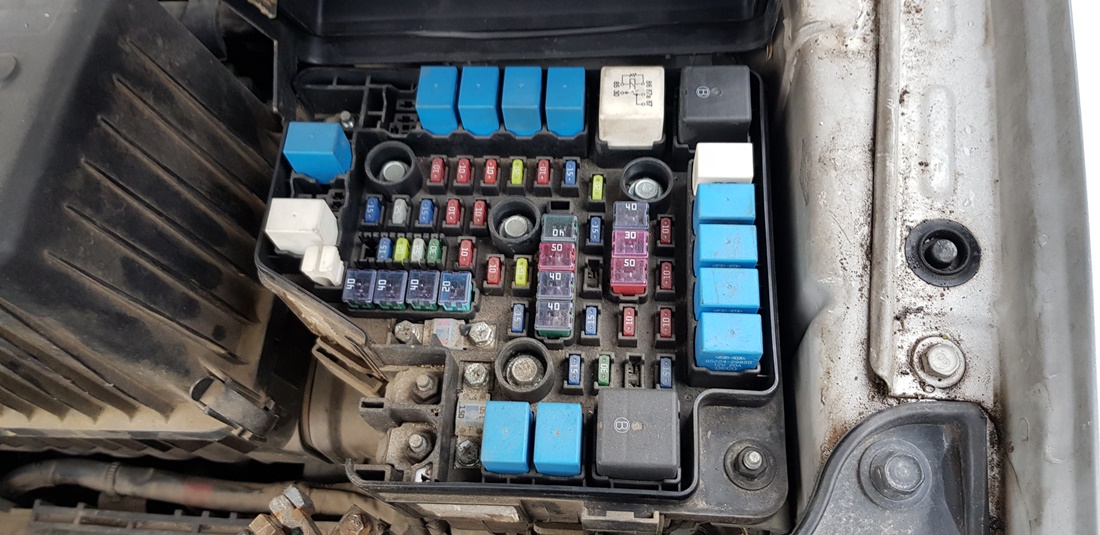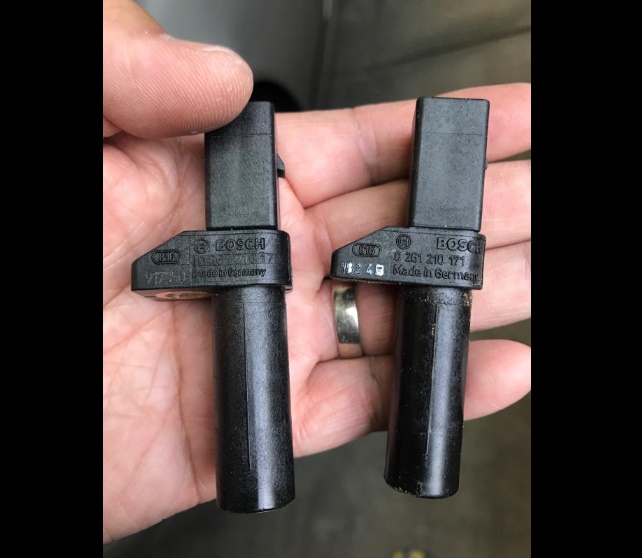An inner or outer tie rod plays an important role in the suspension system. The inner and outer tie rod controls the left and right movement of your wheels.
You can not pass a safety inspection with a bad inner or outer tie rod. So, is it safe to drive with a bad inner and outer tie rod?
Key Takeaway
- A tie rod is a crucial part of the steering mechanism in vehicles, transmitting force from the steering center link or rack gear to the steering knuckle, which turns the wheels in the desired direction.
- Driving with a bad inner and outer tie rod is not safe, as it can lead to loss of steering control, posing a significant risk to your safety and the safety of others on the road.
- Symptoms of bad inner and outer tie rods can include irregular tire wear, lack of steering responsiveness, abnormal noises when steering, and vibrations in the steering wheel.
What Does a Tie Rod Do?

The suspension and steering systems are very complex systems built out of many components. Each of those components plays a key role. When we say suspension or steering, most people think about the shock absorbers or steering wheel. But, the truth is, there is more to it. One of the most important components of the suspension and steering system is the inner and outer tie rods.
”The inner and outer tie rods are components of the suspension and steering system that connects the steering rack to the steering knuckle on both front wheels. The inner and outer tie rods are the parts that are enabling your wheels to turn left and right. When an alignment is done on your vehicle, the mechanic is actually adjusting the inner and outer tie rods.”
Although it might look like a simple and not-so-expensive part, the inner and outer tie rods have a very important role. A bad inner and outer tie rod can be more of a safety issue than a performance issue. If your tie rod is bad, your vehicle can start to wander on the road.
If your left tie rod is bad, when you turn your steering wheel, the left wheel will stay straight. You can imagine how hard it is to steer with only one obeying wheel.
There are some signs that a bad inner and outer tie rod will give. It is important to diagnose and replace your inner and outer tie rod on time before it becomes a problem.
Is It Safe To Drive With a Bad Inner And Outer Tie Rod?

It is not safe to drive with a bad inner and outer tie rod because it can lead to erratic steering, uneven tire wear, and even a complete loss of steering ability.
A bad inner and outer tie rod starts with an excessive steering wheel free play and over time you will completely lose control over steering.
This poses a significant risk to your safety and that of others on the road. While your vehicle might still be able to move with a faulty tie rod, the risk of a sudden and catastrophic steering failure makes driving extremely dangerous.
Therefore, if you suspect an issue with your tie rods, it’s important to have them inspected and replaced if necessary by a professional mechanic immediately.
What Are Inner and Outer Tie Rods
Inner and outer tie rods are critical components of your vehicle’s steering system. They connect the steering wheel to the wheels, enabling you to control the direction of your vehicle.
The inner tie rod is made up of an inline ball joint and connects to the steering rack. It’s often protected by the steering rack boot and is not usually exposed to the elements, which helps it last longer. However, it can still wear out over time due to stress and strain from steering and driving on uneven surfaces.
The outer tie rod connects to the steering knuckle and is more exposed to the environment. It’s also filled with grease but is protected by a small rubber boot. Outer tie rods are usually the first to wear out because they bear the brunt of bumps, potholes, and other road hazards.
Together, the inner and outer tie rods form the tie rod assembly. They play a crucial role in maintaining your vehicle’s alignment and ensuring a smooth ride.
If either the inner or outer tie rod fails, it can lead to misalignment, uneven tire wear, and loss of steering control. Therefore, regular inspection and maintenance of tie rods are essential for safe driving.
Symptoms of Bad Inner and Outer Tie Rods

- Uneven or excessive tire wear
- Reduced steering responsiveness
- Squealing or clunking noises when steering
- Vibration in the steering wheel, especially when turning or driving at high speeds
- Loose feeling or wandering steering wheel
- Vehicle pulling or drifting to one side, indicating bad alignment
How Do You Check Tie Rods?
- Park your vehicle: Ensure your car is parked on a flat and level surface.
- Inspect for physical damage: Look at the outer tie rods near the wheel and the inner tie rods by the steering gear. Check for any visible signs of damage, such as bent parts, broken seals, or grease leaks.
- Check the tires: Look for uneven tire wear, which is often a sign of bad tie rods.
- Do the shake test: With the car in park and the engine off, grab each front tire and shake it. If there’s significant play or movement, your tie rods could be bad.
- Check the alignment: Drive the vehicle at a slow speed in a straight line. If it pulls to one side, this could indicate a problem with the tie rods.
- Listen for noises: Drive the vehicle and listen for any unusual noises when steering, such as squeaking or clunking. These sounds can indicate a failing tie rod.
- Professional inspection: If you suspect a problem with your tie rods based on these checks, take your vehicle to a professional mechanic for a thorough inspection and necessary repairs.
How Does an Inner Tie Rod Work?
The inner tie rod is a vital part of your vehicle’s steering mechanism. When you turn your steering wheel, the rotational movement travels down the steering column to the steering rack.
The steering rack, linked to the inner tie rod, translates this rotational motion into linear motion.
This motion is then transferred from the inner tie rod, which has an inline ball joint for flexibility, to the outer tie rod.
The outer tie rod, connected to the steering knuckle, moves the wheel, directing your vehicle in the intended direction.
Thus, the inner tie rod plays a critical role in converting the rotational motion from the steering wheel into the linear motion needed to steer the wheels. This process ensures precise control over the vehicle’s direction.
How Does an Outer Tie Rod Work?
When you turn the steering wheel, this action is transmitted through the steering column and steering rack, which are connected to the inner tie rod. The inner tie rod then transfers this motion to the outer tie rod.
The outer tie rod is linked to the steering knuckle, a part attached to the wheel assembly. The movement from the steering wheel, passed through the steering system to the outer tie rod, causes the steering knuckle to move.
This motion causes the wheel to turn, allowing the vehicle to change direction. Essentially, the outer tie rod is a bridge between the steering system and the wheels, transmitting the driver’s intent from the steering wheel directly to the road.
How Often Should I Replace My Tie Rods?
You should inspect your tie rods every 15,000 miles and replace them every 100,000 miles.
It’s also suggested that you get them checked at least once a year as part of regular vehicle maintenance.
In some vehicles, they can last for many years. While in other vehicles they may not have to be replaced at all.
It’s important to note that if you’re experiencing issues such as pulling, wandering, or difficult steering, it might be a sign that your tie rods need to be replaced.
Are Tie Rods Expensive To Replace?
On average, the cost for a tie rod replacement falls within the range of $200-$500 according to autotrends.org. RepairPal estimates the average cost between $191 and $203.
However, the price can be as low as $80 to just over $400 as reported by motorverso.com and copilotsearch.com.
How Long Can You Drive On a Bad Tie Rod?

If the tie rod is bad on your vehicle, you can only drive up to ten miles at a speed no higher than 15 miles per hour. Driving longer than ten miles with a speed of over 15 miles per hour, you are risking losing both front wheels.
Driving on a bad tie rod is something that should be avoided at all costs, as it can put your safety and the safety of those around you at risk. The tie rod connects the steering wheel to the front tires and when it is damaged or broken, it can lead to difficulty steering while driving, creating an unsafe situation.
While some individuals might choose to take a chance and drive with a bad tie rod, this is an extremely ill-advised decision as it could lead to an accident due to loss of control over the vehicle.
Additionally, driving for too long with a bad tie rod can cause greater damage to your car or other components related to the rods, compromising its ability to even move.
The most common causes of tie rod failure are corrosion and wear due to metal fatigue. Corrosion occurs when dirt and moisture accumulate on the metal parts over time, leading to rust formation that weakens its structural integrity.
Wear is also caused by stress due to flexing as the rod works with the suspension system while going over bumps or off-road trails. With inadequate lubrication, this stress is exacerbated and can eventually lead to the failure of the tie rod says RepairSmith.
FAQs
Q: How much does it cost to replace a tie rod end?
A: The cost to replace a tie rod end can vary depending on the make and model of your vehicle, as well as the location and labor rates of the mechanic. On average, the cost can range from $100 to $300 per tie rod end. It is recommended to get a quote from a trusted mechanic to get an accurate estimate for your specific vehicle.
Q: Can I drive with a broken tie rod?
A: No, it is not safe to drive with a broken tie rod. A broken tie rod can cause a complete loss of steering control, making it extremely dangerous to drive. If you suspect that your tie rod is broken, it is important to have it towed to a mechanic for repairs.
Q: How can I tell if my tie rods are going bad?
A: There are several signs that your tie rods may be going bad.
These include uneven tire wear, a shaking or vibrating steering wheel, a loose or wandering steering feel, difficulty maintaining proper alignment, and a clunking noise when turning the steering wheel.
If you notice any of these symptoms, it is advisable to have your tie rods inspected by a mechanic.
Q: Can a bad tie rod end affect alignment?
A: Yes, a bad tie rod end can affect the alignment of your vehicle. If the tie rod end is worn or damaged, it may cause the front wheels to be out of alignment, resulting in uneven tire wear and poor steering control. It is important to have your tie rod end replaced and your alignment checked if you suspect any issues.
Q: How often do tie rods go bad?
A: The lifespan of tie rods can vary depending on the driving conditions and maintenance practices. However, tie rods are subject to wear and tear over time and can eventually go bad.
Regular inspection and maintenance of your vehicle’s steering and suspension system can help identify and prevent premature failure of tie rods.
Q: What causes tie rods to fail?
A: Tie rods can fail due to a variety of reasons, including wear and tear from normal use, exposure to harsh driving conditions, lack of regular maintenance, and impact or damage from road hazards or accidents. Over time, the ball and socket joint of the tie rod end may also wear out, leading to failure.
Q: How long can I drive with a bad tie rod?
A: It is not recommended to drive with a bad tie rod. Driving with a bad tie rod can result in a loss of steering control, which is extremely dangerous. If you suspect that your tie rod is bad, it is best to have it replaced as soon as possible to ensure your safety on the road.
Q: How do I replace a tie rod end?
A: Replacing a tie rod end is a complex task that requires specialized tools and knowledge. It is recommended to have a qualified mechanic perform the replacement. The process typically involves loosening and removing the old tie rod end, installing a new one, and then aligning the front wheels to ensure proper alignment.
Are Tie Rod Ends Supposed To Move
The tie rod ends are not supposed to move. So, if you are suspecting that your tie rods are going bad and you are doing a visual inspection, excessive free play in tie rod ends is a clear sign that you need to replace the tie rod ends.
When To Replace Tie Rod Ends
The inner and outer tie rods do not have a specific lifespan expectancy. How long the tie rod will last depends on your vehicle model, where, and how you drive it. You should replace your tie rods only when you hear a clunking and knocking noise coming from the front wheels, or your vehicle starts to wander.
In Conclusion
Driving with a bad inner and outer tie rod is dangerous and not recommended. Tie rods are crucial for steering control, enabling your wheels to turn left and right.
A failing tie rod can lead to loss of steering control, uneven tire wear, and alignment issues, which can exacerbate the problem and potentially lead to dangerous driving conditions.




